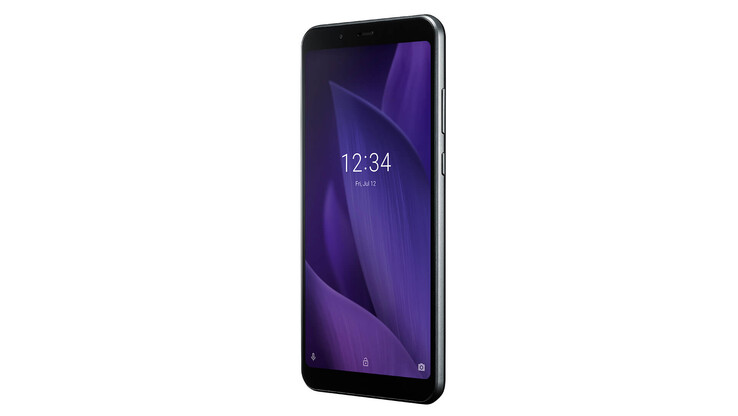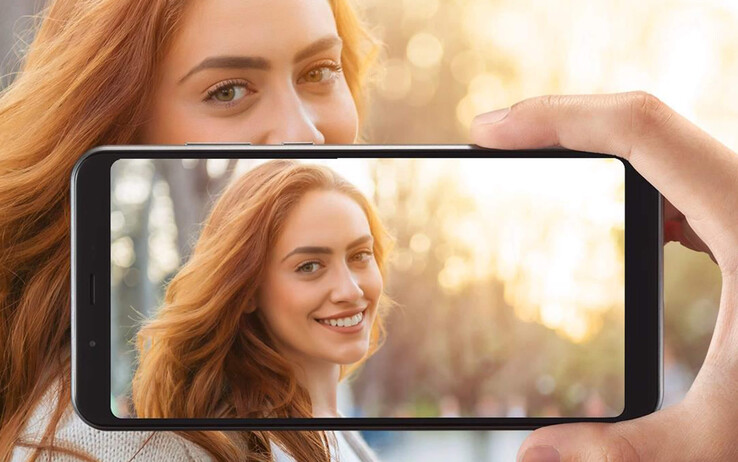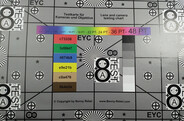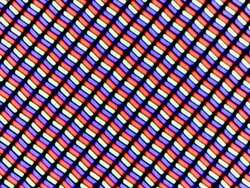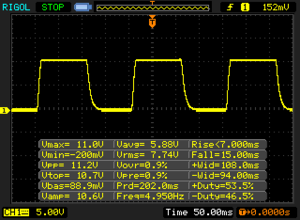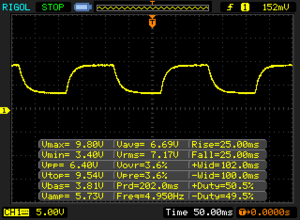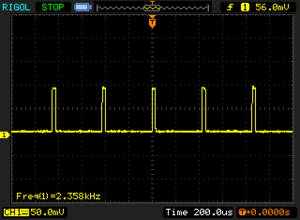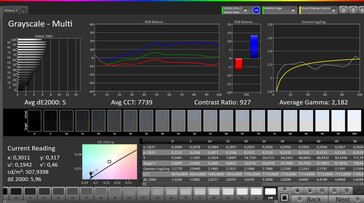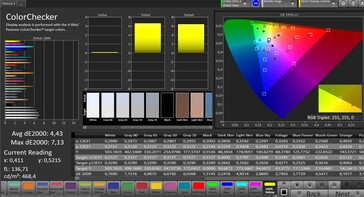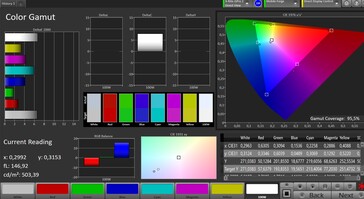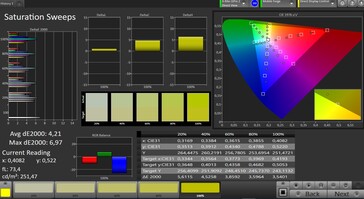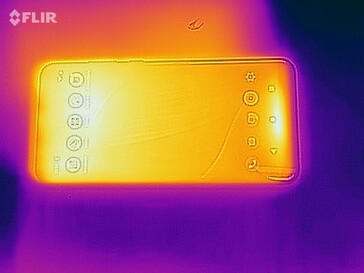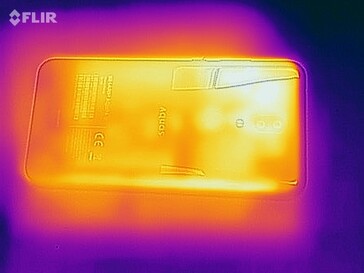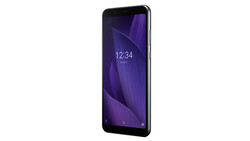Sharp Aquos V Smartphone Review – With Graphic Power to Victory
Comparison devices
Bewertung | Rating Version | Datum | Modell | Gewicht | Laufwerk | Groesse | Aufloesung | Preis ab |
|---|---|---|---|---|---|---|---|---|
| 80.6 % v7 (old) | v7 (old) | 03 / 2020 | Sharp Aquos V SD 835, Adreno 540 | 173 g | 64 GB UFS 2.0 Flash | 5.90" | 2160x1080 | |
| 80.7 % v7 (old) | v7 (old) | 11 / 2019 | Xiaomi Redmi Note 8 Pro Helio G90T, Mali-G76 MP4 | 200 g | 128 GB UFS 2.0 Flash | 6.53" | 2340x1080 | |
| 79.8 % v7 (old) | v7 (old) | 11 / 2019 | Samsung Galaxy M30s Exynos 9611, Mali-G72 MP3 | 188 g | 64 GB UFS 2.1 Flash | 6.40" | 2340x1080 | |
| 77.6 % v7 (old) | v7 (old) | 01 / 2020 | Nokia 6.2 SD 636, Adreno 509 | 180 g | 64 GB eMMC Flash | 6.30" | 2340x1080 |
Case, Equipment and Operation - Ergonomic and Fast WLAN
The exterior of the Sharp Aquos V is Japanese-style. Completely in black, with a glossy back and matt frame. The manufacturer attaches particular importance to this: the so-called "FeelFitRidge" is supposed to fit particularly well in the hand and, thanks to its strength, give the device special stability. In fact, the smartphone looks very robust, and at the same time the frame actually feels secure and ergonomic in the hand.
As the Sharp Aquos V is somewhat more compact than many other smartphones in this price range, it can also save a few grams in weight and is the lightest of the comparable devices at 173 grams.
The device supports WiFi 5, which in itself is nothing special, even in this price range. On the other hand, thanks to 2x2 MIMO, it also takes advantage of the speed advantages of the standard and brings significantly faster speeds for the Internet than the competition. We determined the values in our standardized test with the reference router Linksys Nighthawk AX12.
You can still see eMMC flash in smartphones over 200 euro, but the Sharp Aquos V comes with UFS 2.0 memory. It's not quite at the top of the league with that, the Samsung Galaxy M30s with UFS 2.1 memory is ahead of the pack. However, the memory is also of higher quality and faster than in many other smartphones in this price range. Current Bluetooth 5.0 is on board, NFC is unfortunately searched for in vain.
On the back there is a fingerprint sensor that unlocks the smartphone quickly and reliably. The touchscreen reacts quickly and reliably to inputs.
| Networking | |
| iperf3 transmit AX12 | |
| Sharp Aquos V | |
| Samsung Galaxy M30s | |
| Xiaomi Redmi Note 8 Pro | |
| Nokia 6.2 | |
| iperf3 receive AX12 | |
| Sharp Aquos V | |
| Xiaomi Redmi Note 8 Pro | |
| Samsung Galaxy M30s | |
| Nokia 6.2 | |
Cameras - Dual-camera Without Sense
There are two full 13 megapixel lenses on the back of the Sharp Aquos V. That sounds good at first, but the manufacturer doesn't give any information about what the second lens does exactly. An optical zoom through different focal lengths is not possible, obviously the second lens is only used to calculate bokeh effects, which is a pity.
The image quality is decent, but also quite dark. Details can usually be seen well, but are far from the sharpness and contrast of current high-end smartphones. Even in low light the brightening is too low. In the lab under defined lighting conditions, the smartphone shows a good image sharpness, but too little contrast in dark color tones. At 1 lux illuminance, almost nothing can be seen on the pictures.
The front camera could also brighten up better and does not offer top quality in terms of image sharpness.
Really great: Thanks to the high-quality SoC, 4K video recordings are possible with the camera. The camera adjusts the exposure very softly to the ambient light and offers a pretty good image quality.
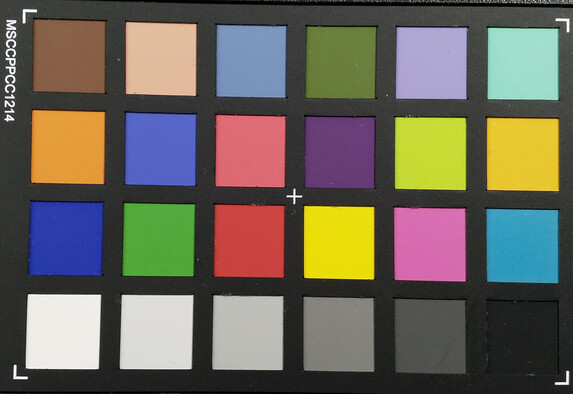
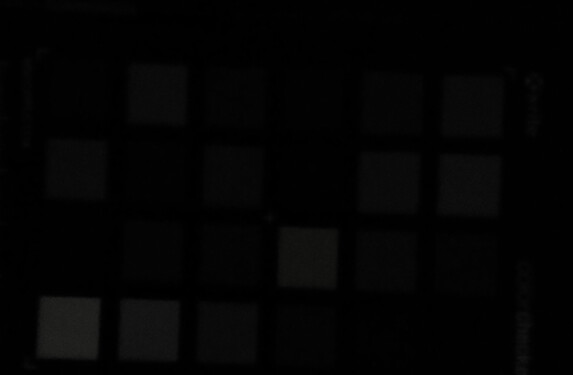
Display - A Little Pale
The display of the Sharp Aquos V offers an extended FullHD resolution. This is standard in the price range and is completely sufficient for a sharp image display. We only detect PWM with such a high frequency that even sensitive natures can probably ignore it.
The brightness of the display can't quite keep up with the comparable devices, but the screen is still bright enough for everyday use. You can only see the advantages of the competition in very strong sunlight. Display manufacturer Sharp could have taken a bit more care with the black value, though, so there is only a meager contrast and colors look visibly pale and powerless.
The image display in our tests with the CalMAN software and the spectrophotometer is quite accurate, a slight blue cast is noticeable.
| |||||||||||||||||||||||||
Brightness Distribution: 91 %
Center on Battery: 507 cd/m²
Contrast: 922:1 (Black: 0.55 cd/m²)
ΔE ColorChecker Calman: 4.43 | ∀{0.5-29.43 Ø4.77}
ΔE Greyscale Calman: 5 | ∀{0.09-98 Ø5}
95.5% sRGB (Calman 2D)
Gamma: 2.18
CCT: 7739 K
| Sharp Aquos V IPS, 2160x1080, 5.9" | Xiaomi Redmi Note 8 Pro IPS, 2340x1080, 6.5" | Samsung Galaxy M30s Super AMOLED, 2340x1080, 6.4" | Nokia 6.2 IPS, 2340x1080, 6.3" | |
|---|---|---|---|---|
| Response Times | 16% | 72% | -3% | |
| Response Time Grey 50% / Grey 80% * (ms) | 50 ? | 38.4 ? 23% | 10 ? 80% | 53.2 ? -6% |
| Response Time Black / White * (ms) | 22 ? | 20 ? 9% | 8 ? 64% | 22 ? -0% |
| PWM Frequency (Hz) | 2358 ? | 118 | 2336 ? | |
| Screen | 12% | 25% | 7% | |
| Brightness middle (cd/m²) | 507 | 669 32% | 600 18% | 611 21% |
| Brightness (cd/m²) | 486 | 630 30% | 597 23% | 582 20% |
| Brightness Distribution (%) | 91 | 87 -4% | 95 4% | 91 0% |
| Black Level * (cd/m²) | 0.55 | 0.42 24% | 0.4 27% | |
| Contrast (:1) | 922 | 1593 73% | 1528 66% | |
| Colorchecker dE 2000 * | 4.43 | 4.8 -8% | 2.5 44% | 5.2 -17% |
| Colorchecker dE 2000 max. * | 7.13 | 9 -26% | 7.17 -1% | 10.2 -43% |
| Greyscale dE 2000 * | 5 | 6.2 -24% | 2 60% | 6.1 -22% |
| Gamma | 2.18 101% | 2.24 98% | 2.013 109% | 2.21 100% |
| CCT | 7739 84% | 7846 83% | 6399 102% | 8100 80% |
| Total Average (Program / Settings) | 14% /
13% | 49% /
37% | 2% /
5% |
* ... smaller is better
Display Response Times
| ↔ Response Time Black to White | ||
|---|---|---|
| 22 ms ... rise ↗ and fall ↘ combined | ↗ 7 ms rise | |
| ↘ 15 ms fall | ||
| The screen shows good response rates in our tests, but may be too slow for competitive gamers. In comparison, all tested devices range from 0.1 (minimum) to 240 (maximum) ms. » 47 % of all devices are better. This means that the measured response time is similar to the average of all tested devices (20.2 ms). | ||
| ↔ Response Time 50% Grey to 80% Grey | ||
| 50 ms ... rise ↗ and fall ↘ combined | ↗ 25 ms rise | |
| ↘ 25 ms fall | ||
| The screen shows slow response rates in our tests and will be unsatisfactory for gamers. In comparison, all tested devices range from 0.165 (minimum) to 636 (maximum) ms. » 85 % of all devices are better. This means that the measured response time is worse than the average of all tested devices (31.6 ms). | ||
Screen Flickering / PWM (Pulse-Width Modulation)
| Screen flickering / PWM detected | 2358 Hz | ≤ 10 % brightness setting | |
The display backlight flickers at 2358 Hz (worst case, e.g., utilizing PWM) Flickering detected at a brightness setting of 10 % and below. There should be no flickering or PWM above this brightness setting. The frequency of 2358 Hz is quite high, so most users sensitive to PWM should not notice any flickering. In comparison: 53 % of all tested devices do not use PWM to dim the display. If PWM was detected, an average of 8084 (minimum: 5 - maximum: 343500) Hz was measured. | |||
Performance, Emissions and Battery - Sharp-phone with Lots of Graphic Power
The Qualcomm Snapdragon 835 is an older high-end SoC, which was used in 2017 in the OnePlus 5 or the Google Pixel 2, for example. The Sharp Aquos V thus achieves good performance values in the lower middle class in 2020, but it can't quite keep up with the Xiaomi Redmi Note 8 Pro in terms of processor performance. Nevertheless, you should be well equipped for everyday use with the former top SoC.
In terms of graphics performance, however, the Sharp Aquos V is hard to beat in this class, offering more than four times the performance of other devices. If you look at older test reports on smartphones with this SoC, even 60 fps should be possible in some games.
There is a warming under load, but this is by no means critical, but only slightly noticeable on the case and also strongly limited to the upper range.
The mono loudspeaker on the lower edge delivers passable sound for a smartphone of the lower middle class, but every now and then the high frequencies boil unpleasantly in the ear. A 3.5mm audio port is available, as well as Bluetooth; clean sound reaches the end devices via both channels.
The battery is quite small with 3.160 mAh. Nevertheless, Sharp manages to turn it into just under 12 hours of runtime in our WLAN test, which speaks for good energy efficiency. Of course, the Galaxy M30s can't catch up with our test device, but at least it's enough for two working days of average usage. Charging usually takes under 2 hours.
| PCMark for Android | |
| Work performance score (sort by value) | |
| Sharp Aquos V | |
| Xiaomi Redmi Note 8 Pro | |
| Samsung Galaxy M30s | |
| Nokia 6.2 | |
| Average Qualcomm Snapdragon 835 (8998) (6854 - 9927, n=20) | |
| Work 2.0 performance score (sort by value) | |
| Sharp Aquos V | |
| Xiaomi Redmi Note 8 Pro | |
| Samsung Galaxy M30s | |
| Nokia 6.2 | |
| Average Qualcomm Snapdragon 835 (8998) (5603 - 7510, n=20) | |
| GFXBench | |
| on screen Aztec Ruins Normal Tier Onscreen (sort by value) | |
| Sharp Aquos V | |
| Xiaomi Redmi Note 8 Pro | |
| Samsung Galaxy M30s | |
| Nokia 6.2 | |
| Average Qualcomm Snapdragon 835 (8998) (14 - 26, n=5) | |
| Average of class Smartphone (6.2 - 166, n=208, last 2 years) | |
| 1920x1080 Aztec Ruins Normal Tier Offscreen (sort by value) | |
| Sharp Aquos V | |
| Xiaomi Redmi Note 8 Pro | |
| Samsung Galaxy M30s | |
| Nokia 6.2 | |
| Average Qualcomm Snapdragon 835 (8998) (25 - 26, n=5) | |
| Average of class Smartphone (3.4 - 367, n=208, last 2 years) | |
| on screen Aztec Ruins High Tier Onscreen (sort by value) | |
| Sharp Aquos V | |
| Xiaomi Redmi Note 8 Pro | |
| Samsung Galaxy M30s | |
| Nokia 6.2 | |
| Average Qualcomm Snapdragon 835 (8998) (8.9 - 16, n=5) | |
| Average of class Smartphone (0.85 - 144, n=209, last 2 years) | |
| 2560x1440 Aztec Ruins High Tier Offscreen (sort by value) | |
| Sharp Aquos V | |
| Xiaomi Redmi Note 8 Pro | |
| Samsung Galaxy M30s | |
| Nokia 6.2 | |
| Average Qualcomm Snapdragon 835 (8998) (9.3 - 9.9, n=5) | |
| Average of class Smartphone (1.2 - 146, n=208, last 2 years) | |
| Sharp Aquos V | Xiaomi Redmi Note 8 Pro | Samsung Galaxy M30s | Nokia 6.2 | Average 64 GB UFS 2.0 Flash | Average of class Smartphone | |
|---|---|---|---|---|---|---|
| AndroBench 3-5 | 158% | 112% | -20% | 53% | 770% | |
| Sequential Read 256KB (MB/s) | 651 | 535 -18% | 483.6 -26% | 296.8 -54% | 513 ? -21% | 2235 ? 243% |
| Sequential Write 256KB (MB/s) | 206.2 | 193.5 -6% | 190.7 -8% | 158.5 -23% | 175.2 ? -15% | 1871 ? 807% |
| Random Read 4KB (MB/s) | 157.2 | 156.2 -1% | 133.8 -15% | 78.8 -50% | 117.1 ? -26% | 297 ? 89% |
| Random Write 4KB (MB/s) | 16.8 | 180.4 974% | 137.1 716% | 14.88 -11% | 81.1 ? 383% | 343 ? 1942% |
| Sequential Read 256KB SDCard (MB/s) | 78.5 ? | 71.6 ? -9% | 74.2 ? -5% | 83.4 ? 6% | 73.4 ? -6% | |
| Sequential Write 256KB SDCard (MB/s) | 54.5 ? | 57.3 ? 5% | 61.1 ? 12% | 61.5 ? 13% | 55.4 ? 2% |
Temperature
(±) The maximum temperature on the upper side is 40.8 °C / 105 F, compared to the average of 35.2 °C / 95 F, ranging from 21.9 to 247 °C for the class Smartphone.
(+) The bottom heats up to a maximum of 39.1 °C / 102 F, compared to the average of 34 °C / 93 F
(+) In idle usage, the average temperature for the upper side is 28 °C / 82 F, compared to the device average of 32.9 °C / 91 F.
Speakers
Sharp Aquos V audio analysis
(±) | speaker loudness is average but good (80 dB)
Bass 100 - 315 Hz
(-) | nearly no bass - on average 26.2% lower than median
(±) | linearity of bass is average (10.2% delta to prev. frequency)
Mids 400 - 2000 Hz
(±) | reduced mids - on average 5.6% lower than median
(+) | mids are linear (5.3% delta to prev. frequency)
Highs 2 - 16 kHz
(±) | higher highs - on average 5.4% higher than median
(±) | linearity of highs is average (7.4% delta to prev. frequency)
Overall 100 - 16.000 Hz
(±) | linearity of overall sound is average (23.3% difference to median)
Compared to same class
» 52% of all tested devices in this class were better, 7% similar, 41% worse
» The best had a delta of 11%, average was 35%, worst was 134%
Compared to all devices tested
» 69% of all tested devices were better, 5% similar, 25% worse
» The best had a delta of 4%, average was 24%, worst was 134%
Xiaomi Redmi Note 8 Pro audio analysis
(±) | speaker loudness is average but good (79.3 dB)
Bass 100 - 315 Hz
(-) | nearly no bass - on average 23.2% lower than median
(±) | linearity of bass is average (11.8% delta to prev. frequency)
Mids 400 - 2000 Hz
(+) | balanced mids - only 4.5% away from median
(+) | mids are linear (4.2% delta to prev. frequency)
Highs 2 - 16 kHz
(±) | higher highs - on average 5.3% higher than median
(+) | highs are linear (3.8% delta to prev. frequency)
Overall 100 - 16.000 Hz
(±) | linearity of overall sound is average (25.6% difference to median)
Compared to same class
» 63% of all tested devices in this class were better, 7% similar, 30% worse
» The best had a delta of 11%, average was 35%, worst was 134%
Compared to all devices tested
» 78% of all tested devices were better, 5% similar, 17% worse
» The best had a delta of 4%, average was 24%, worst was 134%
Battery Life
| Sharp Aquos V 3160 mAh | Xiaomi Redmi Note 8 Pro 4500 mAh | Samsung Galaxy M30s 6000 mAh | Nokia 6.2 3500 mAh | Average of class Smartphone | |
|---|---|---|---|---|---|
| Battery Runtime | |||||
| WiFi Websurfing (h) | 12 | 14.4 20% | 19.2 60% | 10.2 -15% | 19.3 ? 61% |
Pros
Cons
Verdict - Exceptional Performance
An interesting thought that Sharp had there: what if we simply took an older high-end SoC and thus offered a smartphone in the lower middle class. The advantages are obvious: The performance is decent, the graphics performance is even exceptional for the class, the energy efficiency fits and you get quite fast WLAN and LTE in addition.
The Sharp Aquos V also offers acceptable camera performance, but the pictures could be brighter. The case is simple, but stable and ergonomic, thanks to the quick fingerprint sensor you can quickly access your data and the battery life is also acceptable.
You rarely get so much speed in the lower middle class: The Sharp Aquos V is a tip for all those who want a lot of performance for little money.
Of course, the test device may not be a really stylish mobile phone, the screen is not so insanely bright and the color display is a bit pale. Apart from that, you should definitely have the Sharp Aquos V on your screen if you are interested in a cheap mid-range device.
Sharp Aquos V
- 03/13/2020 v7 (old)
Florian Schmitt




